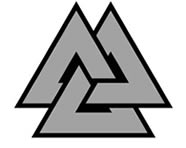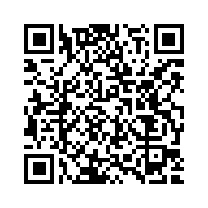
Author : Anderson Sandra K.
Title : The practice of Shiatsu
Year : 2007
Link download : Anderson_Sandra_K_-_The_practice_of_Shiatsu.zip
Foreword. Shiatsu is a bodywork modality with roots in traditional Chinese medicine, various forms of Japanese massage, and a Western understanding of anatomy and physiology. In fact, shiatsu is the perfect meeting of Eastern and Western approaches to the human body. Its power lies in its approach to assessment and treatment. Shiatsu takes the whole person into consideration - the client’s mental, emotional, and physical state - and seeks to restore harmony and balance. Western science is gradually accepting, if somewhat grudgingly, the notion of mind-body interconnectedness (e.g., see Molecules of Emotion: The Science Behind Mind-Body Medicine, by Candace Pert, PhD). Not surprisingly (given its Asian roots), the concept of interconnectedness is inherent in shiatsu. The Western physiology term is homeostasis, and we learn in physiology class that the body is always seeking homeostasis. It literally means “same state” and refers to the process of keeping the internal body environment in a steady state of equilibrium. The importance of this cannot be overstressed because “internal body environment” includes our mental and emotional states. A great deal of the hormone system and autonomic nervous system is dedicated to homeostasis. Symptoms occur when homeostasis is disturbed, through injury, illness, or stress. Shiatsu has proved to be an effective modality for supporting the body in restoring overall homeostasis. Shiatsu is now part of the curriculum at a large number of massage schools all over the country, and you can pick up books on shiatsu at most bookstores. The shiatsu books available either are aimed at a general audience (e.g., do-it-yourself shiatsu, treat your family and friends with shiatsu) or are more suitable for acupuncture students (i.e., they are considerably more technical and involved than a shiatsu practitioner needs). Th e massage school I went to offered an evening program that combined massage certifi cation with shiatsu training. I was excited about learning both Western and Eastern modalities. However, there was many a night when studying Western physiology and pathology alongside traditional Chinese medicine and Five Element Th eory made my brain go TILT. Although the textbooks that were used for shiatsu were of good quality, they amounted to overkill - dizzyingly complex. Fortunately, one of my shiatsu teachers was Sandy Anderson. Sandy is an eminently practical person. As a teacher, she was able to translate an Eastern worldview and abstract concepts into language and exercises that made sense to us Western-schooled students. Now, as a writer, Sandy has produced a book that fi lls a big gap in shiatsu education. Th rough her review of the literature and her experience as both a practitioner and teacher of shiatsu, Sandy has crafted a book that provides the essential foundation to begin a practice of shiatsu. When I was a student, the hardest concept for me to transfer from theory to practice was that of Ki (Japanese), or Qi (Chinese), which is variously translated as “energy” or “life force.” Although I accepted the idea of Ki moving in channels (meridians) in the body, actually experiencing it and then applying the various theories (e.g., Yin/Yang, Five Element) were mind-bending challenges. In this book, Sandy effectively makes that bridge between theory and practice. Sandy approaches the discussion of Ki by stressing the importance of connection - that shiatsu treatment happens as a result of the connection between practitioner and client - another aspect of the interconnectedness that pervades life. Because the quality of treatment is directly dependent on the quality of the connection between practitioner and client, Sandy provides the student with a variety of techniques to achieve a clear, open state. In fact, one of the many strengths of the book is the emphasis on preparation. American culture is fast paced, and Americans are impatient for results. We take the fewest number of vacation days compared with any other country in the developed world. ...

Demolins Edmond - L'éducation nouvelle
Auteur : Demolins Edmond Ouvrage : L'éducation nouvelle Année : 1898 Lien de téléchargement :...














